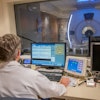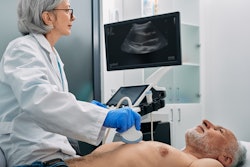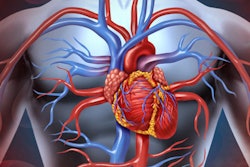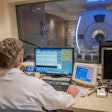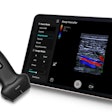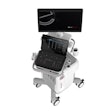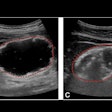An AI screening model based on echocardiography can differentiate cardiac amyloidosis from other causes of increased left ventricular wall thickness, suggest findings published July 9 in the European Heart Journal.
A team led by Jeremy Slivnick, MD, from the University of Chicago in Illinois found that the model achieved high accuracy for echocardiography-based detection of cardiac amyloidosis.
“The AI model accurately differentiated [cardiac amyloidosis] from phenotypically relevant controls, irrespective of age, sex, ethnicity, and ultrasound vendor, and outperformed traditional transthoracic echocardiogram-based screening methods,” Slivnick and colleagues wrote.
Due to overlapping features, it remains challenging to accurately differentiate cardiac amyloidosis from phenotypic mimics when using clinical and imaging techniques. Slivnick et al developed a novel AI screening algorithm for detecting echocardiography-based cardiac amyloidosis.
They used a multisite, multiethnic dataset (n = 2,612 patients) to create a convolutional neural network. The researchers trained the model to differentiate between amyloidosis and phenotypic controls by using transthoracic apical four-chamber video clips. From there, the team performed external validation at 18 sites around the world. This included 597 cases of cardiac amyloidosis and 2,122 controls.
The group also compared the algorithm's accuracy with that of the transthyretin cardiac amyloidosis score and the increased wall thickness score in older patients with heart failure with preserved ejection fraction and increased wall thickness.
After removing uncertain AI predictions (13%), the model achieved an area under the receiver operating characteristic curve (AUROC) of 0.93, 85% for sensitivity, and 93% for specificity. This was irrespective of cardiac amyloidosis subtype, with sensitivity values ranging from 84% to 86% for all subtypes, the team reported.
The algorithm maintained its performance in subgroup analysis. This included AUROC values of 0.86 for patients who were clinically referred for technetium pyrophosphate scintigraphy imaging and 0.92 for matched patients.
Finally, it outperformed the transthyretin cardiac amyloidosis scoring (AUROC = 0.73) and increased wall thickness scoring (AUROC = 0.8).
The study authors highlighted that this model "has the potential to improve the accuracy and efficacy of echocardiographic [cardiac amyloidosis] detection, thereby facilitating access to life-prolonging therapies."
"Our study aligns with a growing body of evidence supporting the role of AI to improve the echocardiographic detection of cardiac amyloidosis," Slivnick and colleagues added.
They also called for a better understanding of how the model will be integrated into existing guidelines for diagnosing this condition.
Research employees from Ultromics took part in this study, with the company also funding the research. The full study can be read here.


